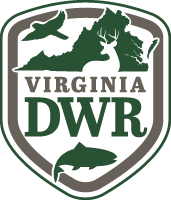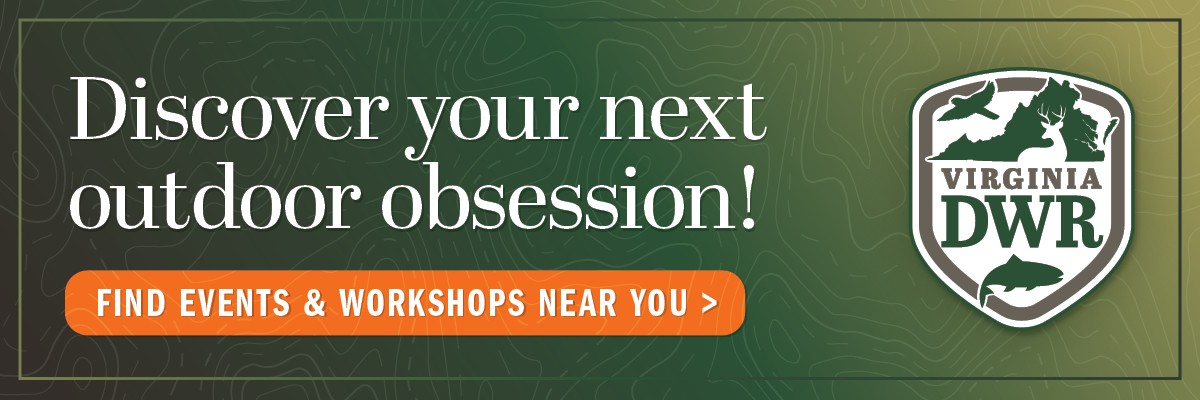For the 2025-2026 Season
By Ben Lewis/DWR
The opening day of dove season—September 1—is considered by sportsmen across the country to be the official start of the fall hunting season. The tradition of the opening day dove hunt endures in Virginia as hunters gather to test their wing-shooting abilities with these sporty game birds.
Mourning dove hunting is offered in 41 U.S. states and several Canadian provinces. In 2022, an estimated 1.3 million dove hunters harvested more than 8 million doves across the country. Harvest Information Program (HIP) surveys in Virginia indicate there are more than 15,000 dove hunters in the Commonwealth and the harvest during the 2022-23 season was around 174,000 doves. Data from recent years indicate the dove population to be approximately 165 million doves in the United States with around 5 million doves in Virginia. These population estimates are derived from leg-banding studies, call counts, and breeding bird surveys.
Weather Conditions
In 2025, early spring weather was mild to warm, with generally below average rainfall amounts. Doves build shallow nests that can get damaged by wet and windy conditions. Conditions during the breeding season this year were favorable for nesting doves and conducive to multiple nesting attempts. The Department of Wildlife Resources (DWR) conducts annual summer trapping and leg-banding of mourning doves to monitor population trends and harvest levels. Banding efforts this year indicated good numbers of young doves throughout the state, with some banding stations reporting excellent numbers of hatch-year doves. Overall, production looks like it will be above average across the state, which will hopefully mean a great dove season.
Habitat Conditions
Dove hunter success often depends not only on the dove populations and nesting success, but also on the condition of the habitat and the amount of food available. Conditions varied around the state, however, in most areas, planting dates for agricultural crops for doves (corn and sunflower) were close to normal this year and coincided with generous summer rains.
As the corn harvest increases in early to mid-September, this will open more feeding grounds for doves. This may also spread the birds out across the available habitat and make concentrations of birds harder to find. Some pre-season or in-season scouting may be necessary to help locate areas that doves are using. Look for fresh-cut agricultural fields or areas with lots of native plant foods like millets and pokeberry.
Please note: Dove fields have been a consistent component of DWR Wildlife Management Area (WMA) management, but changes to operations are likely to be seen in the future. Sunflower fields are often the preferred crop that hunters want to see in a dove field, but the planting costs, repeated treatments required, and DWR staff time add up to a heavy price for these small fields. Decreasing budgets and staff time, coupled with the fact that these fields are typically only hunted a few days per year, have caused a habitat management shift away from highly intensive sunflower fields. Read more about these changes.
Reminders
Remember to check your birds to see if any are wearing leg bands. DWR, along with other state wildlife agencies along the Atlantic Coast, captures and leg-bands doves in July and August, just prior to the hunting season. The information obtained from this banding program is used for evaluating dove population status and for developing hunting season regulations. About five to eight percent of the doves we band are recovered by hunters, and most of those recoveries occur within the state of Virginia. Most band recoveries occur during the first two weeks of the season, and nearly 90 percent of all recoveries occur during the month of September, an indication that most dove hunting occurs during September.
Out-of-state recoveries of Virginia-banded doves have come predominantly from neighboring states or states in the southeastern U.S., including Maryland, North Carolina, South Carolina, Georgia, Alabama, and a couple from Florida. Recoveries of doves banded in states to the north of Virginia (including New York, Pennsylvania, and Maryland) generally show up a bit later in the season. Remember to report any bands you recover to the Bird Banding Laboratory website. This information is essential for evaluating dove movements and survival. In addition, you will receive a “Certificate of Appreciation” that includes information on where, when, and who banded the dove.
Also, remember that in addition to your hunting license, all migratory bird hunters (even if you are license exempt) are required to get a new HIP (Harvest Information Program) certification each year. You can get the free permit by visiting our website. Plan to do so well before going dove hunting so you aren’t rushed trying to do everything at the last minute. Enjoy your hunting, be safe and good luck!
Ben Lewis is DWR’s Wetland Wildlife Program Manager.


